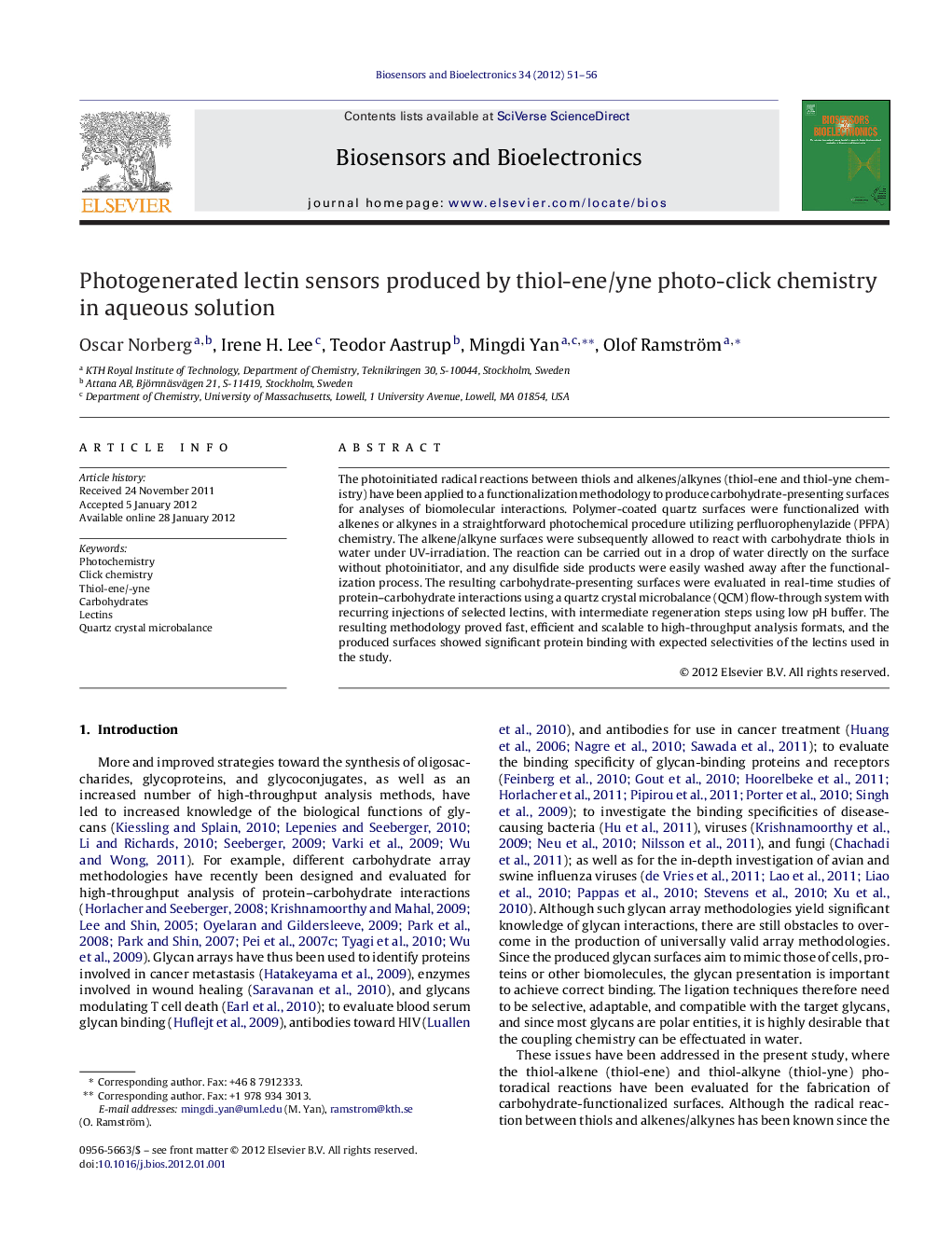| Article ID | Journal | Published Year | Pages | File Type |
|---|---|---|---|---|
| 867441 | Biosensors and Bioelectronics | 2012 | 6 Pages |
The photoinitiated radical reactions between thiols and alkenes/alkynes (thiol-ene and thiol-yne chemistry) have been applied to a functionalization methodology to produce carbohydrate-presenting surfaces for analyses of biomolecular interactions. Polymer-coated quartz surfaces were functionalized with alkenes or alkynes in a straightforward photochemical procedure utilizing perfluorophenylazide (PFPA) chemistry. The alkene/alkyne surfaces were subsequently allowed to react with carbohydrate thiols in water under UV-irradiation. The reaction can be carried out in a drop of water directly on the surface without photoinitiator, and any disulfide side products were easily washed away after the functionalization process. The resulting carbohydrate-presenting surfaces were evaluated in real-time studies of protein–carbohydrate interactions using a quartz crystal microbalance (QCM) flow-through system with recurring injections of selected lectins, with intermediate regeneration steps using low pH buffer. The resulting methodology proved fast, efficient and scalable to high-throughput analysis formats, and the produced surfaces showed significant protein binding with expected selectivities of the lectins used in the study.
